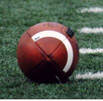Last season, a targeting foul caused an automatic ejection and 15-yard penalty. If instant replay determined that the hit was not targeting, the ejection was rescinded but inexplicably, the 15-yard penalty remained. Now, if officials determine via instant replay that the hit is not targeting, both the ejection and 15-yard penalty are overturned.
Will we see a decrease in targeting penalties upheld that weren't targeting penalties in the first place?
For games that don't have the option of instant replay (if a game is not televised and there is no video available), referees can review a first-half targeting penalty at halftime. If a targeting penalty is overturned at halftime, the player ejected in the first half of the game is allowed to return for the second half.
Other rule changes of note, courtesy of the National Football Foundation and College Football officiating:
LOW HITS ON QB
• Much like the NFL, there is now a low hit policy in place for quarterbacks. Roughing the passer (15-yards) now "prohibits the defense from making forcible contact at the knee or below to an opponent who is in a passing posture." Defenders can still wrap-up below the knees, but they must not lead with the shoulder, helmet or forearm into the quarterback's lower leg. Much like targeting, this will be interpreted by officials, so there's a good chance we'll see a couple iffy low-hit roughing the passer calls this season if a player is being blocked toward the ground and attempts to tackle the quarterback.
NON-CONTRASTING JERSEY/NUMBERS
• Last season, Arkansas State was penalized twice against Auburn for wearing non-contrasting jerseys and having non-contrasting numbers on them. ASU drew the 15-yard penalty once at the beginning of each half. The second time, when Arkansas State was receiving the kickoff, actually resulted in a half-the-distance step off.
In 2014, the contrasting numbers rule penalty has effectively been increased. Before the game, if a team does not have numbers that "clearly contrast with the jersey itself" the referee will ask the team to switch. If the team does not comply, it will be charged a timeout. The referee will then ask at the beginning of each subsequent quarter, meaning a non-compliant team could be charged four of its six timeouts for wearing the jerseys.
POINTS OF EMPHASIS – SIDELINE BEHAVIOR
According to the NFF and CFO, there will be two points of emphasis in officiating this year as well, including the management of players and coaches on the sidelines and player behavior. The NFF says closer attention will be paid to enforcing the sideline rule and officials will be firm about calling unsportsmanlike conduct fouls.


 RSS Feed
RSS Feed